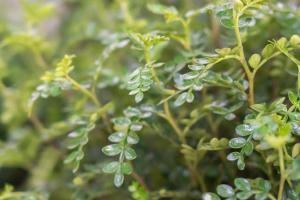Introduction
Styrene is a widely used chemical compound that is present in many everyday products, including plastics, rubber, and resins. Due to its ubiquitous presence, there has been growing concern over the potential health risks associated with exposure to styrene. One area which has garnered attention in recent years is the use of styrene in potted plants. In this article, we will explore the safety of styrene in potted plants.
What is Styrene?
Styrene is an organic compound with the chemical formula C8H8. It is a clear, colorless liquid that is highly flammable and has a distinctive sweet odor. Styrene is primarily used in the production of polystyrene, a popular plastic material that is used in a wide range of applications, from food packaging to insulation materials.
Styrene in Potted Plants
Styrene is sometimes used as a component in the manufacture of plant containers, including plastic and foam pots. However, there has been concern over the potential for styrene to leach from these containers into the soil and ultimately into the plants themselves. The main worry is that the presence of styrene in the soil could lead to the uptake of this chemical by the plant, which could then potentially be ingested by humans or animals that consume the plant.
Health Risks of Styrene Exposure
Styrene exposure has been linked to a number of health risks, including respiratory problems, irritation of the eyes and skin, and damage to the nervous system. There is also evidence to suggest that long-term exposure to high levels of styrene may increase the risk of certain types of cancer, including leukemia and lymphoma.
Is Styrene Safe in Potted Plants?
Despite the potential risks associated with exposure to styrene, there is currently no evidence to suggest that its use in potted plants poses a significant threat to human health. In fact, the levels of styrene that are likely to be present in soil from plant containers are generally considered to be very low. The use of styrene in plant containers is also tightly regulated, with guidelines in place to ensure that levels of exposure remain below safe thresholds.
Conclusion
The presence of styrene in potted plants has generated concern over the potential health risks associated with exposure to this chemical. However, while it is important to monitor the levels of styrene in soil and plant materials, there is currently no evidence to suggest that its use in plant containers poses a significant threat to human health. As with any potentially hazardous substance, it is important to take appropriate measures to ensure that exposure is minimized and levels of risk are carefully managed.

 how many times do yo...
how many times do yo... how many planted tre...
how many planted tre... how many pine trees ...
how many pine trees ... how many pecan trees...
how many pecan trees... how many plants comp...
how many plants comp... how many plants can ...
how many plants can ... how many plants and ...
how many plants and ... how many pepper plan...
how many pepper plan...
































